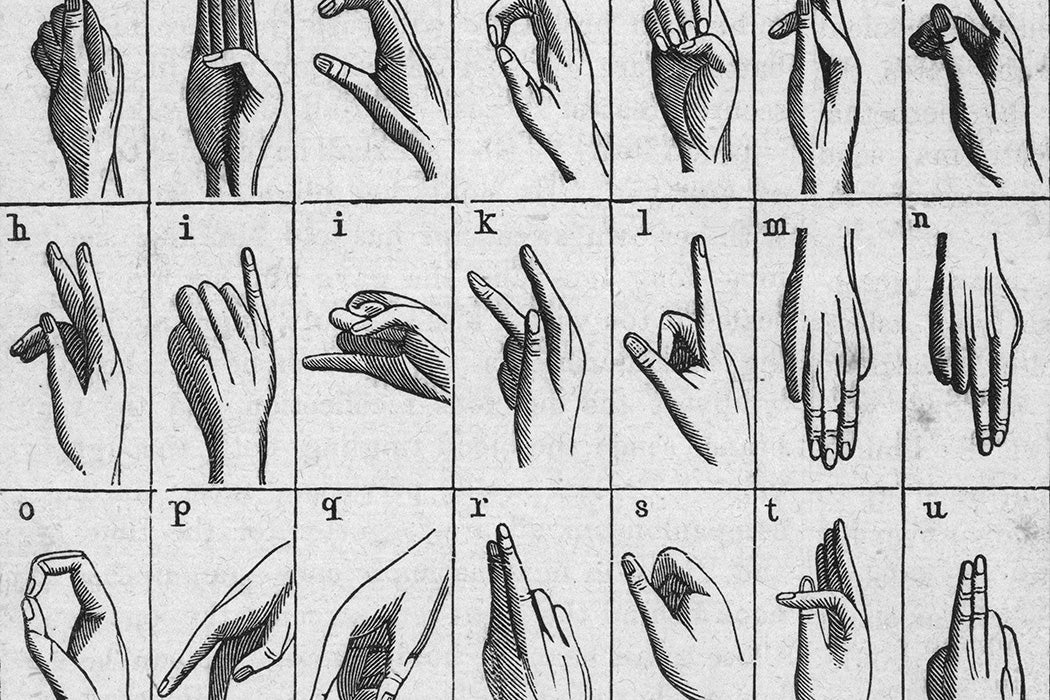In 1847, a group of ambitious authors launched a new publication with a bold statement: “There is not now, and never has been, in the English language, a periodical similar to that which we have decided to issue.” The periodical was the American Annals of the Deaf and Dumb, and by concerning themselves with deaf education and deaf culture, its authors were making a bold statement about the value of people who are deaf and hard of hearing.
Now published as The American Annals of the Deaf, the magazine has been in existence ever since—and its early years offer a fascinating glimpse into changing views of deafness and deaf education. Today, the journal is the world’s most widely read English-language journal about deafness. Back then, it was the publication of the American School for the Deaf, a Connecticut school founded in 1817 that still exists today.
Its early volumes reflect deaf education’s infancy. One of the articles in its first volume, “On the Natural Language of Signs,” paints a picture of how deaf people communicated before American Sign Language (which also came into being at the American School for the Deaf). Thomas Hopkins Gallaudet writes of “natural signs” that arose among deaf people in the absence of spoken language. He notes that “the acquisition by all of a novel, highly poetical, and singular descriptive language… [that brings] kindred souls into a much more close and conscious communion than that of speech can possibly do, is to be regarded rather in the light of a blessing than of a misfortune.”
That commitment to communication is threaded throughout the journal. Nonetheless, it reflects biases that painted deafness and mutism as tragic handicaps that prevented people from accessing religion and mainstream life. In an 1849 poem, “Plead for the Dumb,” an anonymous author mourns deaf people’s “pain and grief,” implying they are unable to commune with God or understand motherly love.
And 1881’s “What the Bible Says About the Deaf and Dumb,” written by Congregational minister J.H. Pettingell, asks whether mutism is “self-imposed” due to profanity and loose living. Though the article concludes that most deafness has physical causes, it implies that other people are not “fully equal to those who can hear and speak, in their mental and moral endowment.” These questions were still being hotly debated in 1885, when E.E. Clippinger asked “Have Uneducated Deaf-Mutes a Conscience?” (His conclusion? No.)
Weekly Newsletter
Over the years, the journal went from justifying the existence of deaf education to spreading the word about the school’s most effective techniques. It also reflects debates about the benefits of oralism (education that focuses on lip reading and speech) and manualism (education that focuses on sign language). “If the child can speak at all… make him speak always,” wrote Albert Louis Edgington Crouter in 1885. Less than a year later, Étienne Bonnot de Condillac posited that “[a]ll the emotions of the heart can be expressed by the positions of the body,” calling sign language beautiful and effective.
Despite deep biases and pedagogical disagreements, the journal also contains the seeds of a distinct deaf culture—and even glimmers of deaf pride. But it lacks deaf voices. Instead, educated advocates, most of them white and male, speak on behalf of deaf people. In 1885’s “Deaf, But Not Dumb,” for example, the father of a deaf daughter, writes of the word “dumb” as a “misnomer, which originated in sheer ignorance, and which is… disparaging to the deaf and humiliating to their kindred.” Those omissions may seem glaring in 2019, but during a time of extreme marginalization for people with disabilities, the publication at least shed light on deaf people as complex humans with legitimate personal and educational needs.







